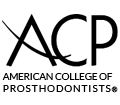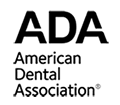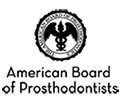You have a problem. We have the solution.
Dental Literature Review: All-On-Four Concept Analysis In Implant Dentistry
In an extremely useful recent study – applicable to dental patients and specialists who use the all-on-four dental implants system to replace missing or infected teeth – numerous research and clinical articles regarding the innovative all-on-four concept were compiled and practical results studied to understand its core principles, and evaluate its advantages and disadvantages as an alternative to conventional implant application.
The objective of this article is to understand the data thrown up in the research and clinical articles related to the all-on-four dental implant concept in the literature review, assess the concept’s basic principles, and present strength and weaknesses of the technique.
The implant technology – formulated as the all-on-four concept – is today offered as an alternative to traditional implant applications. In this technique, 4 implants are positioned in the interforaminal region in the mandible and in the pre-maxillary region in cases of total edentulism.
The innovative dental application of the all-on-4 concept is based on placing two of these implants to the anterior region perpendicular to the occlusal plane and two implants to the posterior region inclined at 30-45 degrees. The implants are made to function by making prompt fixed complete denture over them. After three months, the dental patient is given permanent fixed full arch restoration.
Enablement and availability of immediate dentures and the reduction in the number of surgical procedures are the essential and helpful features of this system.
The advanced all-on-four concept can be a contingent and potential treatment method – particularly in atrophic edentulous jaws, can be used in routine clinical practice – though it is essential that more long-term clinical controlled studies are carried out.
The analysis of compiled studies, titled “All On Four Concept in Implant Dentistry – A Literature Review,” was published in the Journal of Dentistry and Oral Care Medicine. It was authored by Durkan R (Department of Prosthodontics, Faculty of Dentistry, Afyon Kocatepe University, Turkey) and Oyar P (Department of Dental Prostheses Technology, Hacettepe University), and published in September 2017.
Introduction To The All On 4 Implant Concept
Dental implant treatment – a scientifically-accepted treatment model on which long-term studies have been carried out – is now widely used on dental patients with mandibular and/or maxillary edentulism.
In recent times, placing implants for immediate functioning – by making implant-supported fixed full-arch dental restorations whereby patients don’t remain edentulous – has become the gold standard in dental implantology.
In these treatments, it is now known that successful prostheses are designed using 6 implants in the mandible and 6-8 implants in the maxilla and also applying posterior cantilever extension when required.
When full arch fixed implant-supported prostheses are placed, patients achieve the aesthetics, comfort, functional chewing effectiveness, and phonetics and in their natural teeth. The hygiene and clinical controls can be easily carried out – especially in full arch screw-retained fixed prostheses.
But in these treatments, the presence of overly baggy maxillary sinuses for maxilla impedes implant placement in the posterior area – particularly in patients who have excessive resorbed crests. Tuber, pterygoid, and zygomatic implants can be put in the posterior region, and heterogeneous or autogenous bone grafts can be utilized as a solution.
However, during that time, deterioration of patient comfort, risks of surgical complications, and extended surgical operations increased in duration.
Posterior implant treatment constitutes a disadvantage in dental patients who have a resorbed mandible with a mandibular nerve present at the top of the alveolar crest. Other patient-based and surgical disadvantages include short and/or angled implant applications, nervous repositioning, and graft applications.
The technology behind the all-on-four implant was developed to address such disadvantages. Today, the technique that’s popularly used in full arch edentulism cases was presented as a modern technique in implant-denture restoration for the first time by Dr. Paulo Malo in 2003. It began begun to be utilized in atrophic full arch mandibular and in the maxilla in 2005.
The objective of using full arch implant application is to lessen the cantilever extensions by eliminating anatomic region limitations. Implants are placed in the inter-foraminal region in the mandible and in the pre-maxillary region in the maxilla.
The dental implants are put in different regions related to posterior and anterior implant sites. The posterior implants are positioned to the first molar region or second premolar, and anterior implants are positioned at the lateral incisor sites or first premolar/canine region.
The fact that immediate dentures and full arch screw-retained fixed prostheses are made on a total of 4 implants – including two dental implants placed orthogonally to the occlusal plane in the anterior region and two dental implants positioned in the posterior region having a mesial angle of 30-45 degrees in edentulous mandibular/maxillary or both jaws – and are designed and immediately loaded (following surgery of 8-48h), and that the construction of permanent fixed prosthesis after a 3-month period – all form the basis for the all-on-four concept.
Distribution of the forces that were biomechanically sufficient with 4 implants placed at right angles and positions, use of longer dental implants for the posterior region and consequent increase in bone anchorage and positioning in the right biomechanical spot, and securing primary stability are considered the advantages of the innovative all-on-four concept.
Important features of the concept include:
- Use of computer-assisted methods for planning implant surgery
- Digitally-made guide plates
- Increase in the implant success rate
- Fewer complications
- Comfortable post-surgical period for patients
- Gender, edentulous jaw type, and implant placement sites don’t affect treatment plan
- No biomechanically-related stress increase in implant-bone connection
Dental implants types used in the literature for studying this concept included: Branemark System Mk III Ti Unite and Nobel Speedy or the Branemark Novum® System (Nobel Biocare AB, Goteborg, Sweden). But, varied implant systems (such as 2008-Nobel Active and Winsix and Bio SA Fin, Ancona, Italy) have been used in recent years successfully.
For implant-supported dentures, the usual protocol is to place implants parallel to the anterior mandible and maxilla. In implant-supported fixed dentures, the masticatory forces are scattered evenly over the dental implants, and loads on posterior cantilever extensions are shared on multiple anterior implants.
Therefore, loads are distributed by using more maxillary and mandibular anterior implants. But, some studies indicate that there is more load felt on the prosthesis in the extensions applied to the distal portion without taking into consideration the number of dental implants put in the anterior region. And that the forces are absorbed by the distal implants, and it is not affected by the number of implants.
The scope of this dental literature review was to summarize the numerous articles written about all-on-four, compare them, formulate advantages and disadvantages of the method from the literature review, and analyze the all-on-four concept from two angles – crestal bone resorption and osseointegration.
Materials And Method
In this review of multiple research articles, studies related to mandible and maxilla applications of the current all-on-four technique – its pros and cons, osseointegration, clinical survival rates, and crestal bone loss were examined.
This review was carried out in Cochrane Library and Pubmed between 2000 and 2015, and used search keyword and keyword combinations including: 4-implant full arc, full arch implant-supported prosthesis, inclined implant, total edentulism, and osseointegration. Hundred articles from the review were analyzed with respect to the subject under examination.
Included articles were based on the following criteria:
- They were related to the all-on-four concept
- When the full texts could not be obtained, abstracts were used collected
- Articles related to conventional full arch implant usage for edentulous arches were not included in the review.
Results and Discussion
In the PubMed review, 100 articles were compiled, and only 43 were found to be fit as per criteria. Out of these, 3 were review articles, 30 were laboratory studies, 4 were case reports, and 6 were clinical studies.
Most of the studies were in vivo clinical follow-up studies. Two studies were on the electromyographic activity of masticatory muscles for the all-on-four concept. Four articles assessed stress analyses and three clinical studies evaluated clinical survival rate.
The studies sought to evaluate the all-on-four treatment concept and its advantageous objectives such as careful patient selection, reduction of surgical procedures, experienced surgical and restorative team, and short treatment intervals – by offering a relatively predictable and straightforward treatment option for edentulous patients.
Masticatory Muscles And Electromyographic (EMG) Evaluation
To assess this aspect, there was 1 literature review and 1 clinical study. Out of 26, 10 patients aged between 50 and 74 were administered with mandibular all-on-four maxillary complete denture. 8 maxillary/mandibular all-on-four implant-supported fixed prostheses were also made. Eight patients with complete dentures formed the control group.
EMG was used to examine maximum voluntary teeth clenching and masseter and temporalis muscle during unilateral gum chewing. The neuromuscular balance was good in all patients. Similar results were achieved in all groups during mastication, in terms of mastication frequency, and muscle activities on the working side. In terms of EMG parameters, no significant difference between reference subjects and all-on-four implant-supported prostheses was found.
The all-on-four dental technique was suggested for functional use in edentulous patients who indicated low mastication activity in complete dentures.
Van lierde and other researchers concluded that performance of 87% of the prostheses in their case-controlled study was satisfactory. In the study, 15 patients were placed all-on-four implant-supported fixed dentures to the maxilla and mandible.
Seven months later, they examined them in terms of oromyofunctional behavior and phonetic characteristics. Distortions were found while uttering /s/, /z/, /r/,/d/ and /t/ and letters. Oromyofunctional behavior was normal. However, speech therapy was recommended to strengthen the movements of the tongue right after the treatment.
Implant Stress Analysis
During Cidade et al.’s study when 8 mm bilateral cantilever implants with an angle of 35° in maxillary posterior inclined implants were compared with 100 mm bilateral cantilever implants with an angle of 15° in terms of stress by the photo-elastic stress analysis – it was observed that the transference of distal loads coming to cantilever to the inclined implant 35° inclined implants: THE increasing inclination and reduction in stress were advantages. But the stress increased in low-inclined dental implants. However, it was not harmful, and placement was without difficulty.
Apical stresses in dental implants with cervical stress at 35° and 15° of inclination takes place when cantilever effect is not considered. During the two-way finite element analysis carried out to know the stress caused by the splinting of the dental implants around the marginal bone of the implant – particularly in inclined posterior implants – two 13 mm implants were splinted by a titanium beam around the bone, 16 x 3 mm, length: distal cantilever 7 mm – and the distal implant (13 or 19 mm) was inclined 45 degrees and it held the distal end of the cantilever.
Force of 50 N was put via the beam. It was reinforced that distal inclined implants did not trigger increase in stress when they were splinted. Marginal stresses came down along with the utilization of the longer posterior implant.
In Bevilacqua’s 3-D finite element analysis – carried out to observe the stresses on the periimplant bone in inclined and vertical implants in the maxilla – 4 types of configurations were analyzed with the distal implants inclined at 45, 30, 15, and 0 degrees. The cantilever extensions were 0, 5, 9, and 13 respectively. Also, the distal portion of the posterior cantilevers was applied with vertical load (150 N).
The maximum stresses that were recorded in periimplant bone for vertical implants were: 95.0 MPa (metal frameworks), 75.0 MPa (for distal implants), and 35.0 MPa (for mesial implants).
It was recorded that stresses were reduced in the prosthesis and periimplant bone in the full arch fixed prostheses created by the splinting of the dental implants in the atrophic maxilla, and the tilted distal implants – with the resultant reduction of the posterior cantilevers.
Researcher Baggi tried to find out the potential risks of unbalanced load transfer mechanisms and excessive stress, and to identify the primary biomechanical reasons impacting loading transmission 2 tilted distal implants and 2 vertical mesial implants (at a 30-degree angle), and the second utilized vertical implants that as per platform switching principles.
Bone overloading contingency in complete-arch restorations supported by 4 implants and
load transmission mechanisms can be impacted by implant positioning and design, cantilever length, and the bone’s morphology and mechanical properties.
In Takahashi’s study, the use of inclined implants or 4 implants elevated stress on the peri-implant cortical bone. But, when used along with a short cantilever, inclined implants reduced stress on the peri-implant cortical bone. It was found that fixed support prostheses on 4 implants having a cantilever length of 10 mm appropriately resist occlusal loading.
Examination of Results of Clinical Studies
Six clinical studies, conducted as per the all-on-four technique, were examined. The reported cumulative survival rates for the all-on-four concept were 92.2% and 100%, and marginal bone resorption was low.
32 patients were placed with 128 implants, at the conclusion of a 1-year follow-up in maxillary prostheses – the1-year cumulative survival rate recorded was 97.6%, and the marginal bone loss in the implant/abutment junction region was 0.9mm.
In a retrospective study involving 189 patients placed with NobelSpeedy concept implants, the mean annual marginal bone loss was measured to be at the level of 1.2 ± 0.7mm. And the marginal bone level was found to be preserved. It was observed that the total success rate was 98.9%.
Malo with the help of computer-guided flapless implant surgery utilized CAD-CAM technology and computer tomography in surgical planning and to design a customized surgical template.
At the conclusion of 6 and 21 months clinical follow-up period – made on 18 maxilla and 5 mandibles full arch dentures, and the average marginal bone loss was found to be 1.9 mm – supporting the case of implant tilting as a viable treatment method.
One set of researchers attained high success rates in patients who were treated with the Branemark System implant system and stated that the method can be an alternative to other treatment techniques.
It was found that there was no difference in tilted and axial dental implants when analyzed for in terms of osseointegration. Immediate loading was attained by making four implant-screw retained single jaw all-on-four fixed prostheses.
Anterior dental implants were put to the 2nd incisor tooth areas perpendicular to the alveolar crest. The posterior dental implants were positioned at the 2nd premolar alignment at a distance from the sinus nerve in the maxilla and alveolar nerve in the mandible at an angle of 300.
In screw-retained full arch fixed dentures compared to the all-on-four implant, no complication was encountered in the construction of permanent prosthesis.
Marginal bone loss was recorded at 0.14 mm in all-on-four implant prostheses created utilizing platform switch taper implants, and only 2 dental implants failed.
Despite the requirement for implant diameter of at least 4.0 mm to make sure of maximum anchorage – particularly in the mandibular posterior region for the all-on-Four concept – it was observed in the evaluation of Nobel Active dental implant (with 3.5 mm narrow neck diameter) that this technique could be a new standard.
Menini and researchers carried out meta-analysis by including 11 studies in which immediate loading was performed by making maxillary full-arch implant-supported dentures having tilted and upright dental implants.
At least one-year clinical follow-ups were performed. Total of 1,623 implants (845 upright, 778 tilted) were placed in 324 patients into the maxilla. And 16 upright implants and 17 tilted were lost in the first year.
No sizable difference was recorded in terms of failure between the implants. The cumulative survival rate was determined at 97.97%. There was no difference between upright and tilted implants in terms of marginal bone loss at the conclusion of 1-year clinical follow-up in 6 studies. The peri-implant bone resorption was found to be 0.75 mm – upright: 0.73 mm and tilted: 0.77.
It was observed that angular dental implants were successful for short-term in maxillary applications. However, there was a requirement for long-term studies with respect to upright and tilted implants.
The most firmly observed complication was: acrylic temporary prosthesis fractures. It was suggested that the prosthesis could be strengthened with a metal. It was also underscored that eating habits and bruxism can cause complications.
In the meta-analysis that involved 10 studies – 7 prospective and 3 retrospective – 462 patients were administered with 470 immediately loaded prostheses (213: mandible; 257: maxilla), and were supported by 1,992 implants – 966 tilted and 1,026 upright.
In the first year, 25 implants failed. Prosthesis failure did not occur. Implant circumference crestal bone loss didn’t lead to a difference in the tilted and axial implants, and the patients were contended with their prostheses in terms of function, phonetics, and aesthetics.
In 13 studies that went through meta-analysis, the average survival rates of 4,804 implants at the end of 3 years for prostheses and implants were 99.9 1 0.3% and 99.0 1 1.0% respectively.
The axial-tilted and maxilla-mandibular implant difference was not significant. Patients were satisfied functionally and aesthetically, the marginal bone loss did not create a major difference between tilted and axial implants during at least one year of observation.
Acrylic prosthesis fractures took place after 4-6 months’ use – especially in male patients (11%) – while Malo and others recorded acrylic fractures as 27%.
At the end of a clinical follow-up analyzing the prostheses they made utilizing Nobel Biocare implants with 4 mm in diameter, Francetti and other researchers observed that this method could be safely used between tilted and axial implants and between mandible and maxilla in terms of the peri-implant bone level.
It was underscored that peri-implantitis prosthetic complications in 10.4% of patients and peri-implant mucositis complications in 30.2% of patients did not reversibly affect the dental implant success rates and that technical and biological complications were less in the medium term. However, a need for long-term studies was stated.
Findings of Case Reports
In the compiled dental literature, Maló et al. presented the first clinical case report of an all-on-four dental implant. The atrophic full arc was first utilized in the maxilla and mandible in 2005.
It was stated by Ferreira et al. that the bone structure – strong in the interforaminal region in the mandible – augmented the implant success rates despite the maxillary bone’s high trabecular structure.
At the conclusion of the 1-year follow-up in mandibular and maxillary all-on-four implants applied in a patient – 94% success in the mandible and 92.8% success was achieved
After the end of 2 years and follow up in all-on-four implant treatment made in the mandible along with free fibula flap – in a patient who was postoncologic – utilizing 3D computer-assisted treatment planning and guided surgery – no peri-implant mobility or mucositis and Peri-implantit were observed.
No complication were observed in the implants and prosthetic at the conclusion of a 2-year follow-up in all-on-four concept treatment carried out in the mandible with two zygomatic (Nobel Speed-Nobel Biocare/ Zygoma Implants RP Machined) and two anterior implants and regular platform implants – as per the all-on-four concept – applied to the extreme atrophic maxilla of a 55-year-old patient.
(TekkaInkone) all-on-four implants were affixed to the excessively resorbed mandible, at which area the mental foremen were present at the crestal bone level (in a 58-year-old patient). Posterior implants were put to the mental foremen at mesial angle of 30 degrees.
It was seen that the method was successful at the end of the 1-year patient follow-up – with the patient being administered with maxillary conventional complete denture and mandibular fixed prosthesis.
In a 59-year-old patient, four 4.3×13 mm 2 posterior implants were put via 30 distally inclined with implants – torqued to 45 Ncm (4-mm height). There was no implant and prosthetic complication found after a 1-year follow-up in the mandibular prosthesis created with posterior 17 angled abutments and abutments. Success was recorded in a 1-year follow-up in the dental patient applied with maxillary all-on-four concept surgery and prosthetic combo through computer-assisted planning.
As per obtained results from the review – based on peer-reviewed statistics – the application of immediate loading procedures, particularly in the atrophic maxilla and/or mandibular full-arch fixed prostheses – along with the all-on-four concept – offers a significant advantage for the patient as well as the physician.
The usage of fewer implants compared to traditional implant applications and the reduction in duration of surgical operations – increase the use of the all-on-4 technique.
While clinically controlled studies make available data about 5-year follow-ups, there is need for more evaluation via clinical performance evaluation and routine clinical use of the all-on-four concept – further building the case for long-term follow-up studies extending up to 10 years.
Conclusion
The innovative all-on-four concept can considered as an alternative and potential treatment technique particularly for atrophic edentulous jaws. The method can be used in routine clinical practices. However, it is important to invest more research effort on long-term clinically controlled studies.
At his dental clinic – the All on 4 Dental Implant Center in Dallas Fort Worth – the highly-trained and experienced Prosthodontist Dr. Darian Kaar is an expert in placing All-on-4® dental implants for patients in need of new and healthy teeth and smile.
To know more about the transformative benefits of this restorative method, please call our clinic at (214)-237-0553 and schedule your dental appointment with Dr. Darian Kaar. Dr. Kaar is a Board-certified Prosthodontist with impeccable credentials.
**OAC (620 score or higher)
*Cash Payment Discount
*** Cannot be combined with any other offers or insurance.
- Comprehensive Guide to All-On-4® Dental Implants
- All-On-Four Concept Analysis In Implant Dentistry
- Short-Term Success of Dental Restoration With All-on-4 and All-on-6
- Effective All-on-4® Dental Implant Procedures
- Five Factors To Consider Before Getting All-on-4® Dental Restoration
- Everything You Need To Know About All-on-4® Dental Implants
- Misconceptions About All-on-4® Dental Implants
- Advantages and Disadvantages Of All-on-4® Dental Implants
- Crucial Questions About All-on-4® Dental Implants
- All on 4 Dental Implants
- Three-Step Guide To All-on-4® Dental Implants
- The Remarkable Features of All-on-4® Dental Implants
About Dental Implants
25 Years of Experience. Over 10,000 Smiling Patients.
What some of our patients are saying
@Copyright 2024. All Rights Reserved.



-new.png)


























































